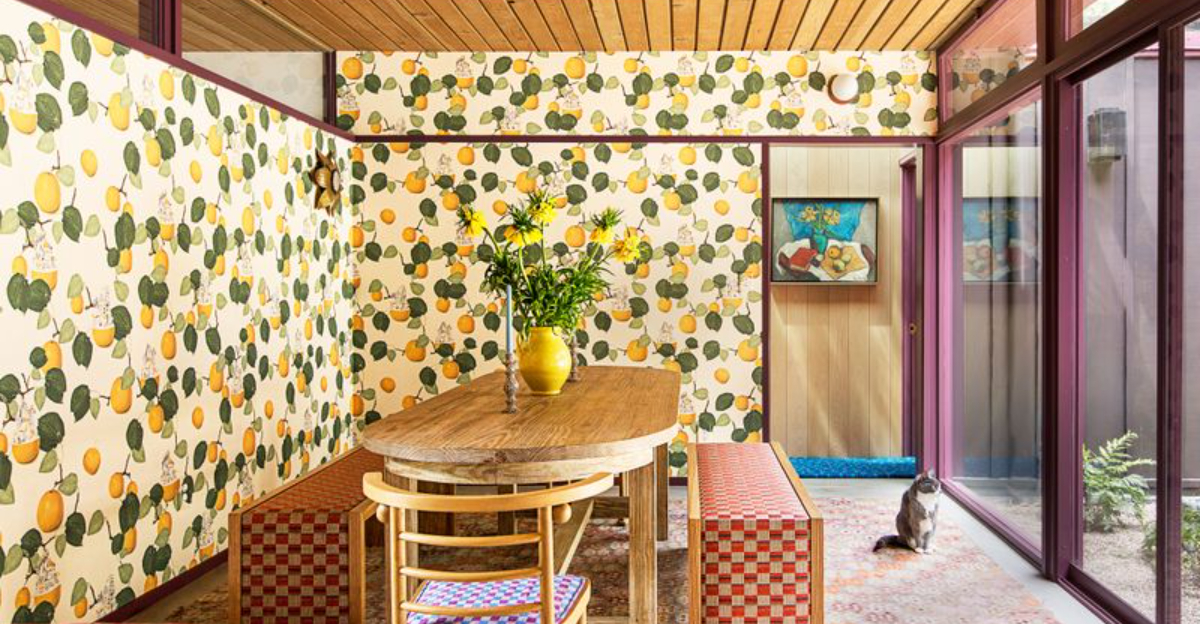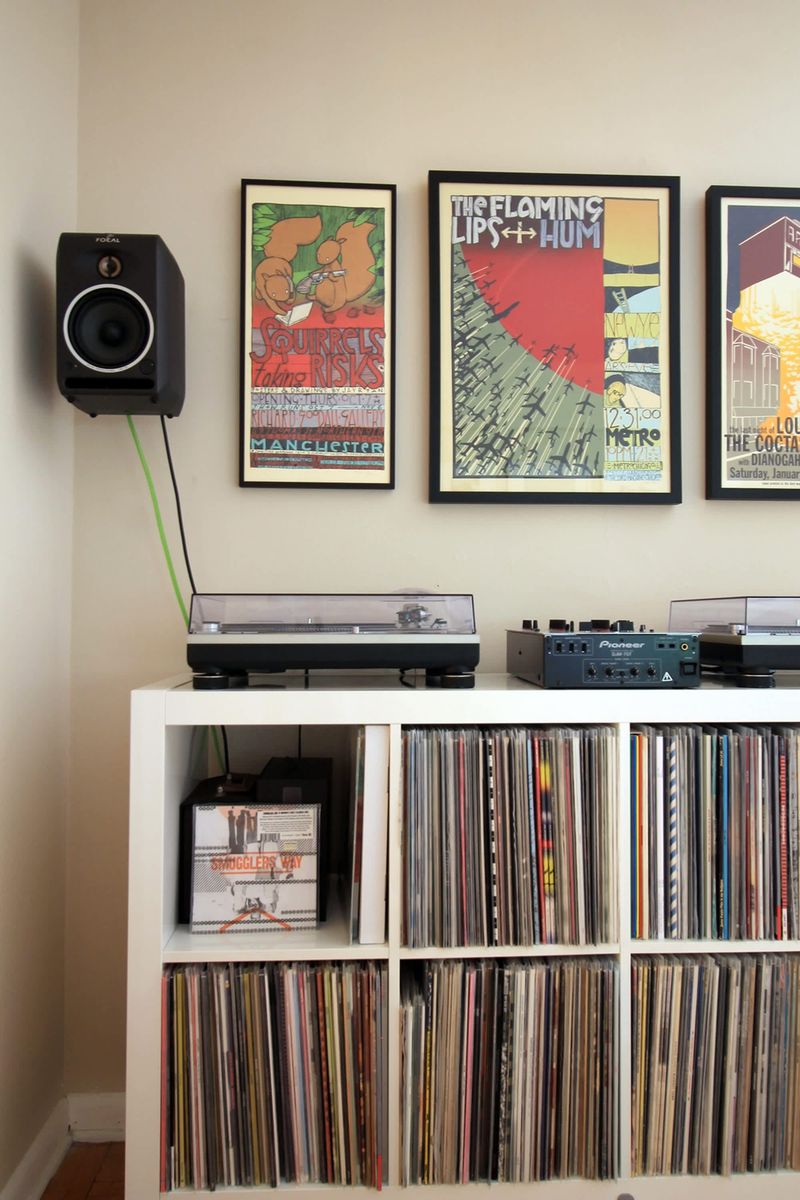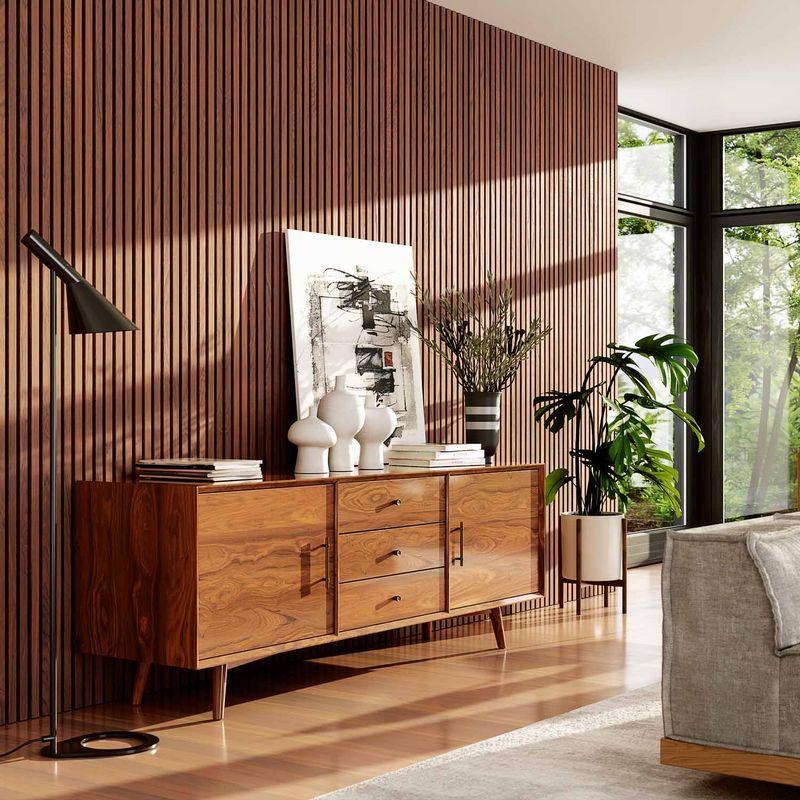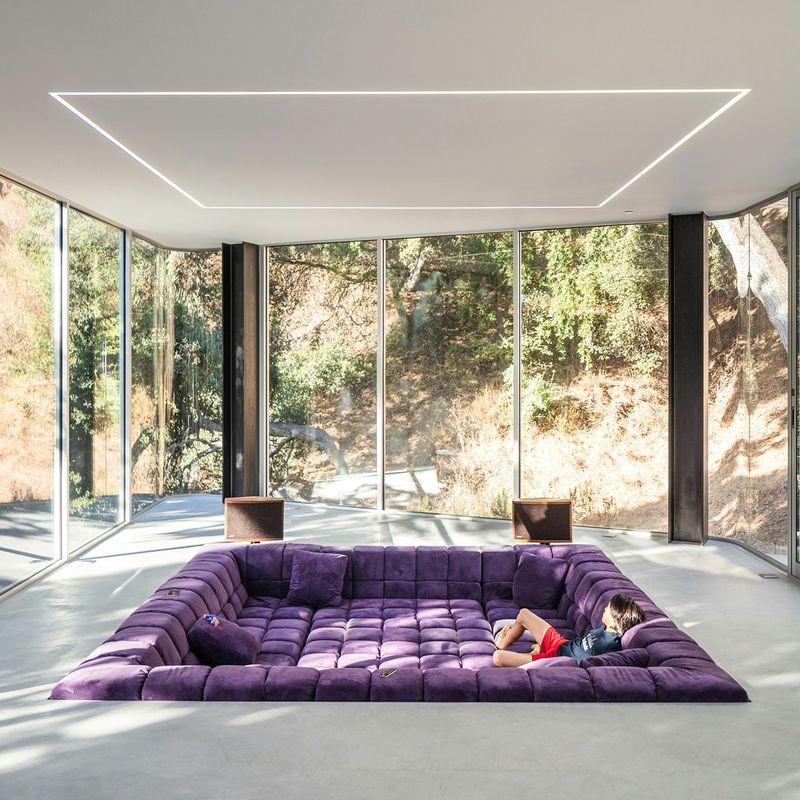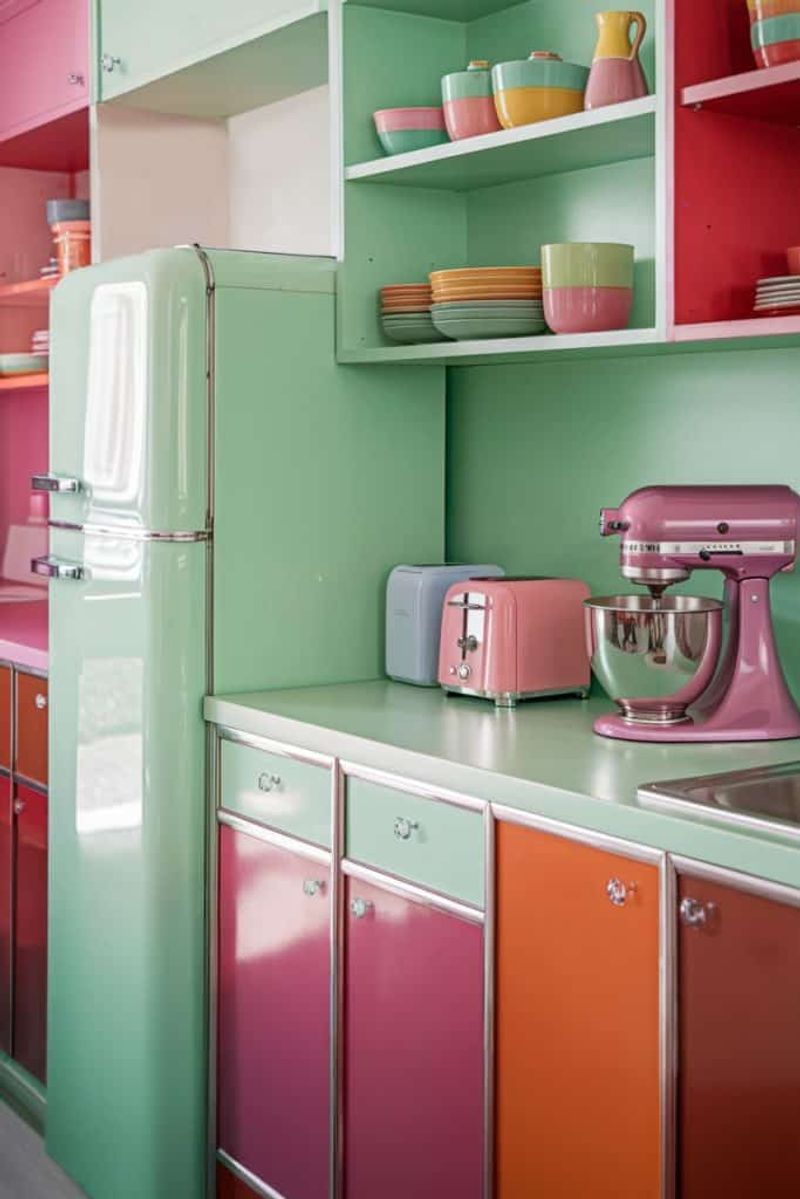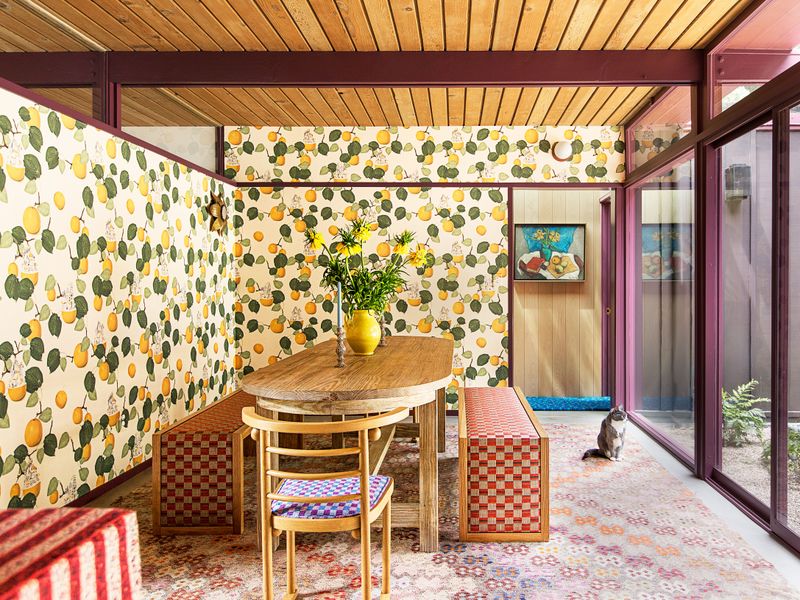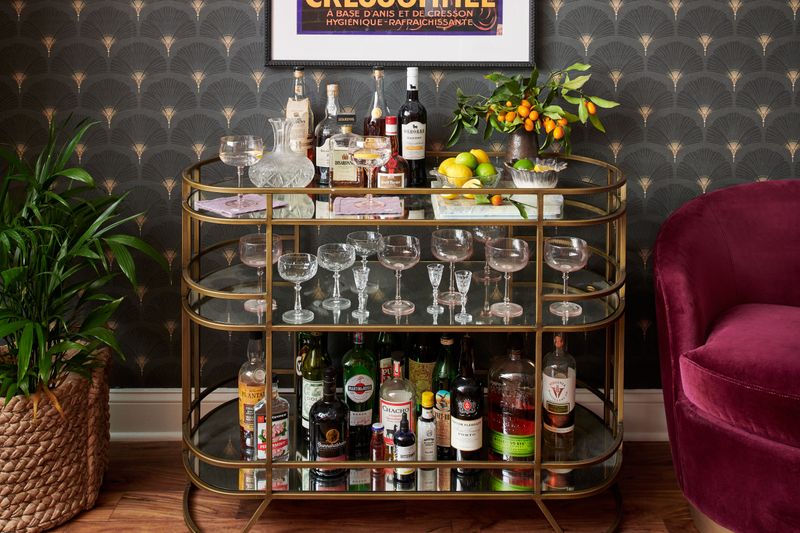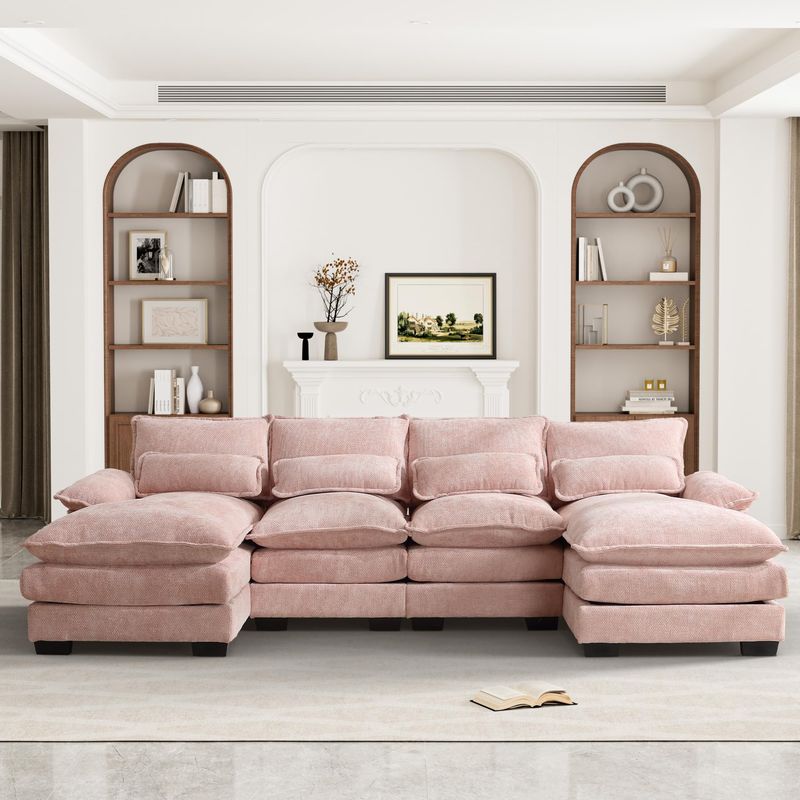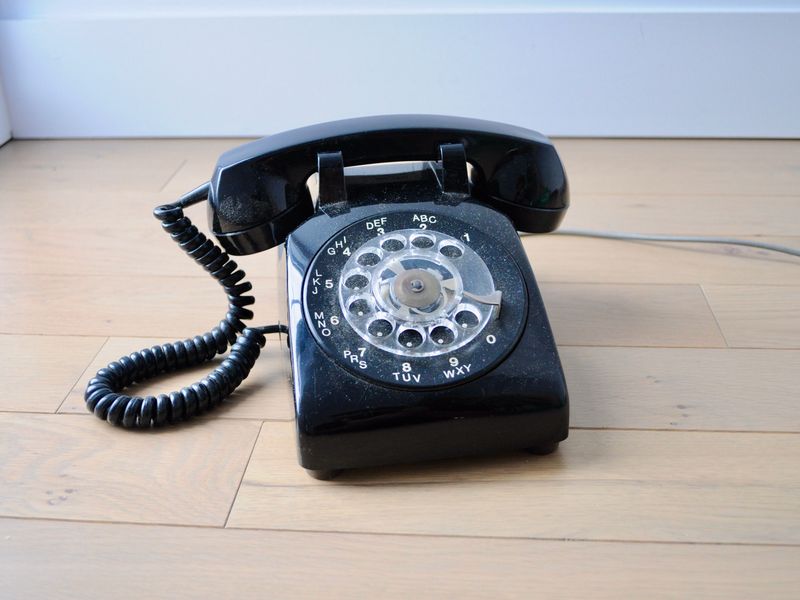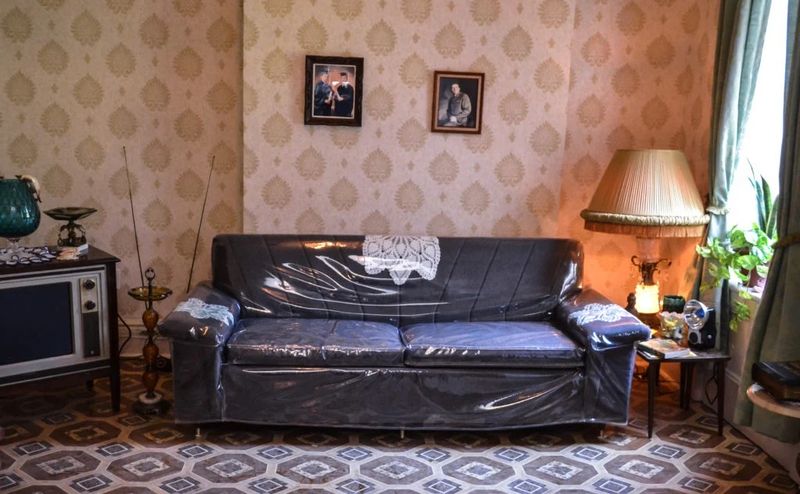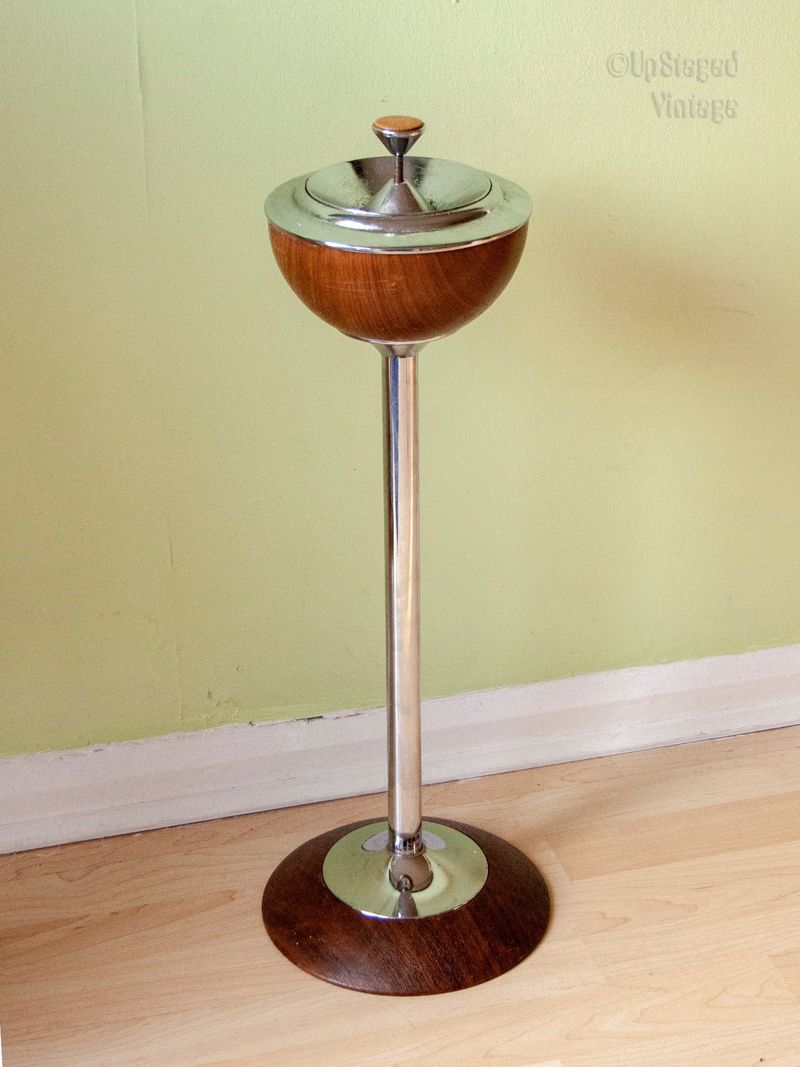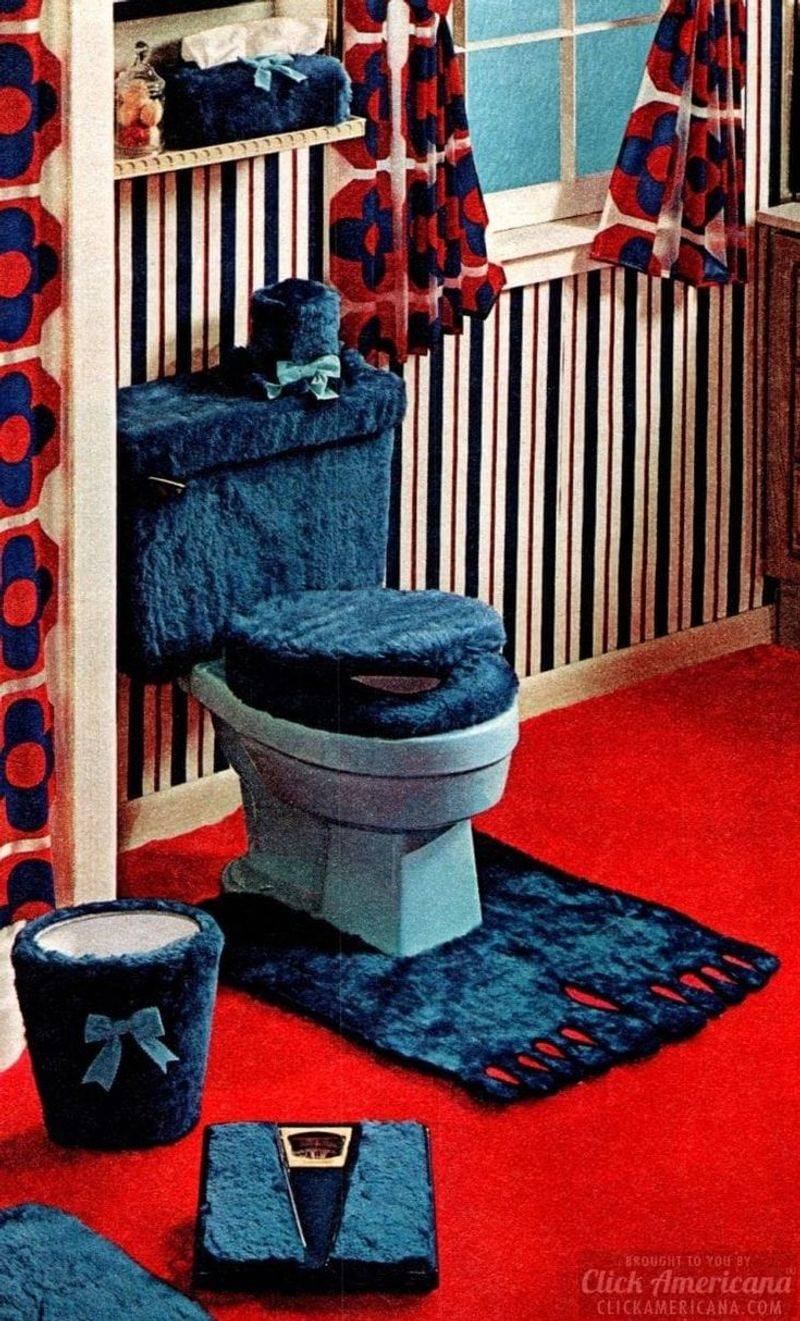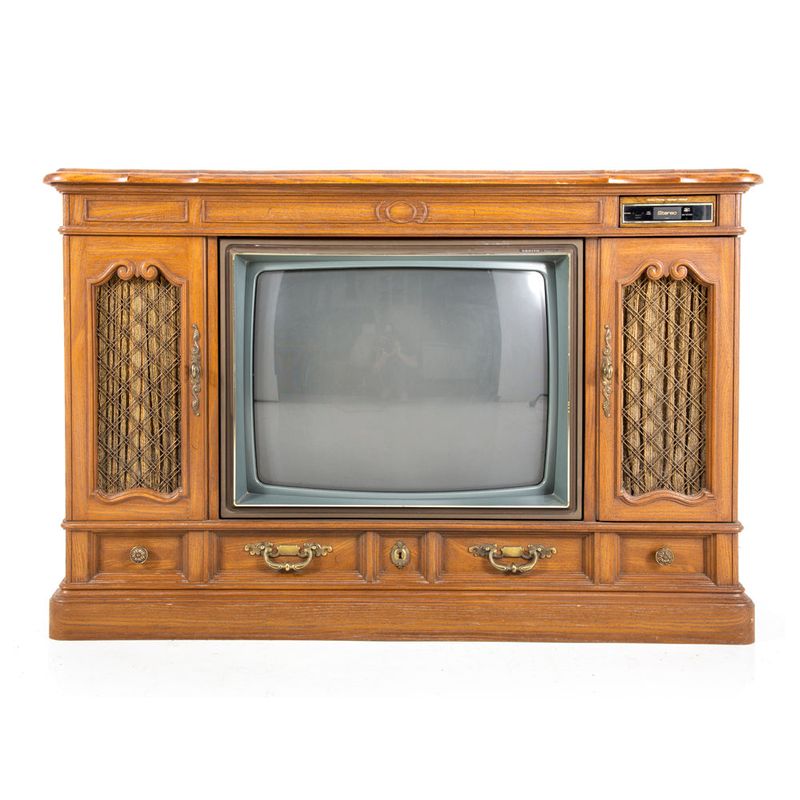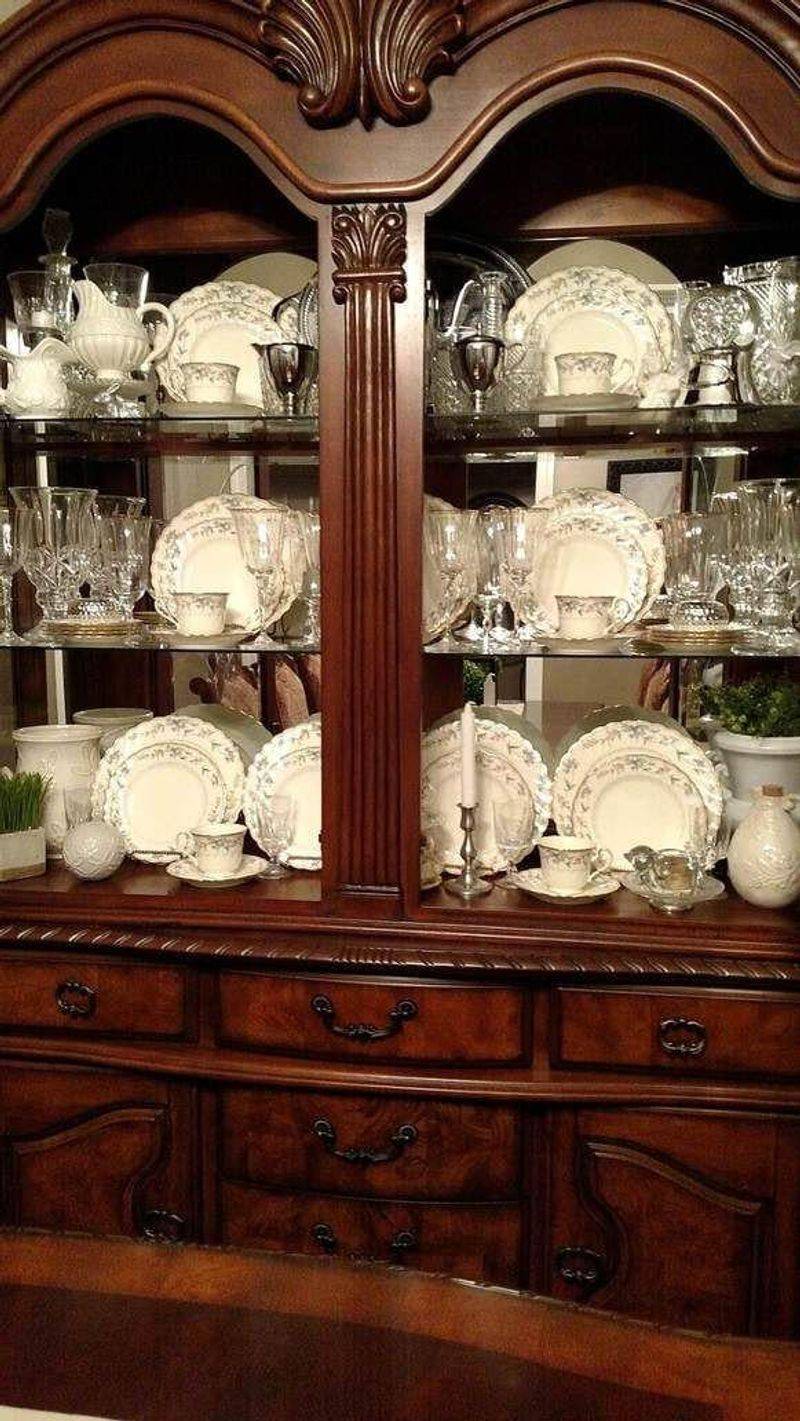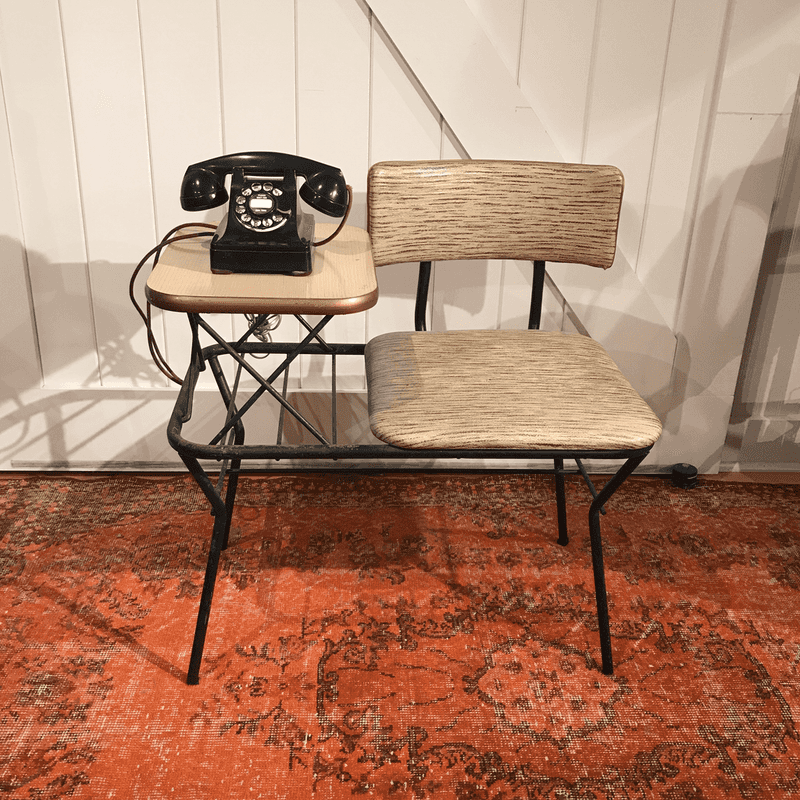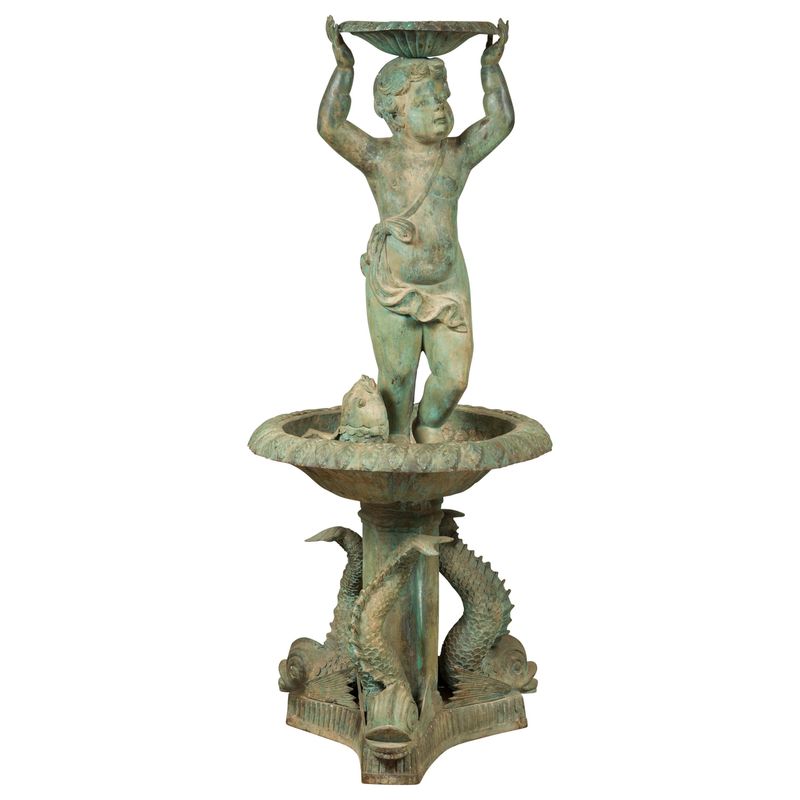Home trends have a funny way of coming full circle – just when you think something is gone for good, it pops back up, cooler than ever.
Many design elements that once filled boomer homes are making a stylish return, charming a whole new generation with their retro flair. Of course, not everything is getting a second chance; some trends are staying firmly in the past (and for good reason).
Curious which old favorites are back in the spotlight and which ones we’re happy to leave behind? Let’s take a nostalgic (and slightly opinionated) stroll through the list!
1. Record Players and Vinyl Collections
What once gathered dust in attics now takes center stage in modern living rooms. The warm, rich sound of vinyl has captivated a new generation tired of digital perfection and streaming services.
Many music enthusiasts claim vinyl offers a more authentic listening experience – complete with pops, crackles, and that distinctive analog warmth.
The ritual of carefully selecting an album, placing the needle, and flipping sides creates a mindful connection to music that’s impossible to replicate with a quick tap on your phone.
2. Houseplants Galore
During the 70s, indoor jungles were all the rage, with hanging macramé plant holders and leafy green friends occupying every sunny corner.
Young homeowners are embracing the biophilic design principles their grandparents intuitively understood – that bringing nature indoors improves both mental wellbeing and air quality.
The pandemic only accelerated this trend, as people stuck at home sought connections with living things and discovered the joy of nurturing something that grows.
3. Wood Paneling
Hold onto your shag carpets – wood paneling is making a serious comeback! Once the hallmark of rec rooms and basements everywhere, this warm wall treatment is returning with a modern twist.
Interior designers are using it more intentionally now, typically on a single accent wall rather than throughout entire rooms. The natural texture adds warmth and character to otherwise minimal spaces, creating visual interest without overwhelming the senses.
Unlike the dark, glossy panels of yesteryear, today’s versions often feature lighter woods, vertical orientation, and matte finishes. Some homeowners are even painting vintage paneling in unexpected colors for a fresh take on this classic look.
4. Conversation Pits
These architectural features were wildly popular in mid-century homes before disappearing in the TV-centric 80s and 90s.
Architects are now revisiting this concept as people crave more meaningful connection in our digital age. The contemporary versions often feature modular seating, built-in charging stations, and dramatic lighting to create an intimate atmosphere for genuine conversation.
5. Colorful Appliances
After decades of stainless steel domination, kitchens are getting colorful again! Remember those avocado green refrigerators and harvest gold stoves from the 60s and 70s? Their spiritual descendants have arrived in fresh new hues.
From pastel pink refrigerators to bright blue stand mixers, these functional pieces double as kitchen décor.
The trend reflects a larger shift toward more individualized spaces that express personal style rather than following rigid design rules.
6. Wallpaper Everywhere
Gone are the days when wallpaper was considered outdated and fussy. The bold patterns that adorned boomer-era homes are experiencing a renaissance, with dramatic florals, geometrics, and textures appearing in every room of the house.
Unlike Grandma’s wallpaper, today’s versions often feature peel-and-stick technology, making them renter-friendly and easier to change when trends shift.
The maximalist movement has embraced wallpaper as a way to create instant personality in a space. Even minimalists are incorporating subtle textured papers to add dimension without visual clutter.
7. Bar Carts and Home Entertaining
Before open-concept kitchens became the entertaining hub, stylish bar carts rolled through living rooms, ready to mix the perfect Old Fashioned or Martini. These mobile miniature bars have wheeled their way back into our homes with impressive momentum.
Cocktail culture has experienced a renaissance, with home mixology becoming a popular hobby during pandemic lockdowns. A well-styled bar cart signals that you’re ready to entertain at a moment’s notice, even if you’re just mixing drinks for yourself.
8. Comfort-First Furniture
Remember those overstuffed recliners and plush sofas that prioritized comfort above all else? After years of suffering through Instagram-worthy but painfully uncomfortable furniture, we’re collectively embracing coziness again.
The difference? Today’s comfort-focused pieces maintain style alongside function.
Interior designers call this trend “comfort modernism,” acknowledging that our homes should actually feel good to live in. As remote work becomes permanent for many, comfortable seating has become non-negotiable, with people unwilling to spend 8+ hours in chairs that look better than they feel.
1. Rotary Phones with Extra-Long Cords
Ah, the satisfying click-click-click as you dialed each number on those clunky plastic devices! Boomers would stretch those spiraling phone cords from room to room, creating booby traps for unsuspecting family members.
Phone conversations were public family affairs, with everyone hearing your business from the kitchen. No privacy, no texting, and definitely no selfies.
Remember those little locks you could install to prevent unauthorized long-distance calls? Or the shared party lines where neighbors could eavesdrop on your conversations? Today’s kids would be absolutely horrified by the primitive communication setup their grandparents thought was cutting-edge technology.
2. Plastic Couch Covers
Nothing said “this furniture is too good to actually use” quite like transparent plastic slipcovers. The squeaky, sticky sensation against bare legs on hot summer days remains an unforgettable tactile memory for anyone who grew up in a plastic-covered home.
The plastic fortress protected against spills, pet hair, and everyday wear—but at what cost? Modern homeowners have embraced the radical notion that furniture should be both attractive AND comfortable, relegating these crinkly covers to the dustbin of interior design history.
3. Smoking Paraphernalia Everywhere
Before the health risks became undeniable, smoking wasn’t just accepted – it was celebrated in home decor! Ashtrays adorned every surface: coffee tables, end tables, kitchen counters, and even bathroom vanities.
Fancy cigarette cases and decorative lighters weren’t hidden away but displayed proudly as status symbols. Some homes featured built-in ashtrays in chair arms or specialized smoking stands with little drawers for cigarette storage.
The strangest smoking accessories? Those little ceramic figurines with hollowed-out heads where you’d extinguish your cigarette. Today’s homes prioritize air purifiers over ash receptacles, making these smoking shrines seem like bizarre relics from an alternate universe.
4. Toilet Carpet and Fuzzy Seat Covers
Nothing screams “hygiene nightmare” quite like wall-to-wall carpeting in the bathroom, extending right up to (and sometimes around) the toilet base. This plush bathroom flooring somehow made perfect sense to the Boomer generation.
But the carpet was just the beginning. The matching fuzzy toilet seat cover – that wooly donut that hugged your toilet seat – completed the unsanitary ensemble.
Today’s bathrooms favor easy-to-clean surfaces over these bacterial breeding grounds, making the carpeted commode a relic of questionable hygiene practices past.
5. Cabinet-Sized Console TVs
Long before sleek flatscreens, televisions were furniture – massive wooden cabinets housing tiny screens and weighing roughly the same as a small car.
These behemoths dominated living rooms across America, often topped with family photos and decorative knickknacks.
6. Dedicated China Cabinets for “Good Dishes”
The sacred repository of dinnerware used approximately twice per decade! These imposing pieces of furniture showcased the “good china” that was too precious for regular meals but mandatory for displaying wealth to visitors.
Many received these formal dining sets as wedding gifts and dutifully maintained the tradition of never actually using them. Modern minimalists have rejected these specialized storage monuments, opting instead for dishware that’s both beautiful AND practical enough for everyday use. Revolutionary!
7. Telephone Gossip Benches
Before mobile phones, Boomers created dedicated furniture just for making phone calls! The telephone gossip bench—a bizarre hybrid of seat, desk, and phone stand—occupied hallways and kitchen corners across America.
These wooden wonders featured a small seat attached to a narrow desk surface where the heavy rotary phone would sit. The perfect perch for hour-long neighborhood gossip sessions! Some fancier models included little drawers for phone books and message pads.
8. Faux Mediterranean Fountains and Water Features
Nothing proclaimed “sophisticated homeowner” in the 1970s quite like an indoor fountain. These gurgling monstrosities—usually featuring cherubs, Greek goddesses, or mysterious Mediterranean village scenes—became status symbols in many Boomer households.
The constant sound of trickling water (and occasional splashing onto nearby carpeting) created a unique ambiance. Plus the joy of regularly refilling them and fighting the inevitable algae growth! Some ambitious homeowners even installed permanent built-in versions with pumps and special lighting.

